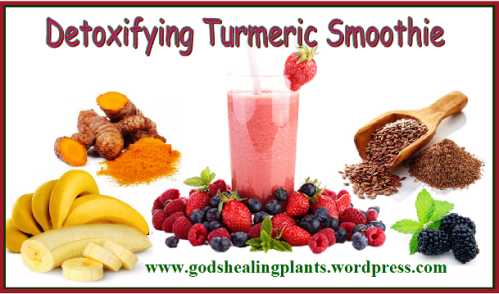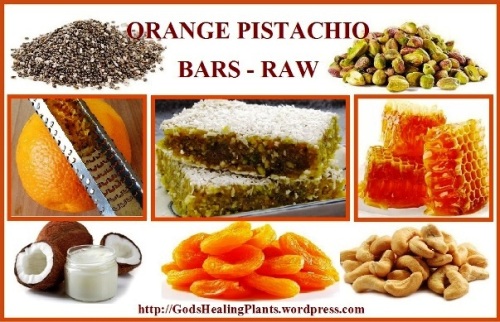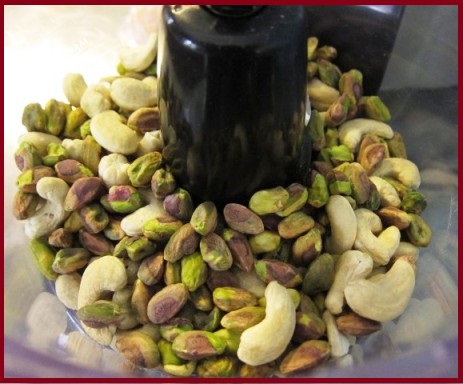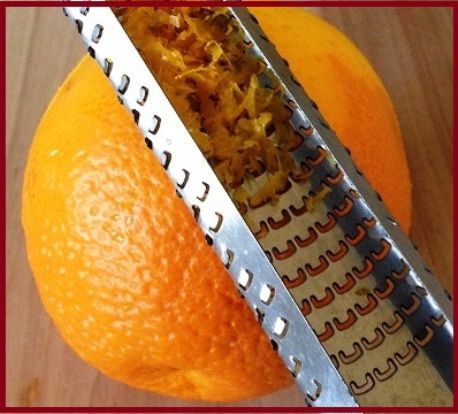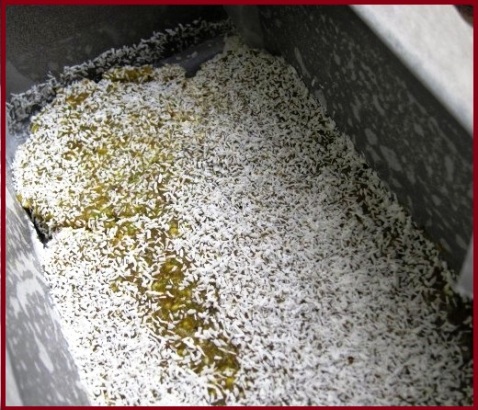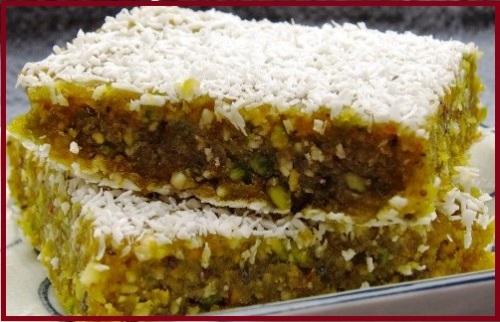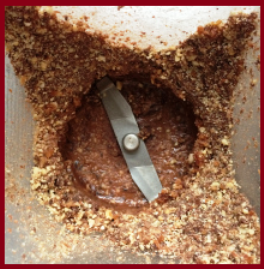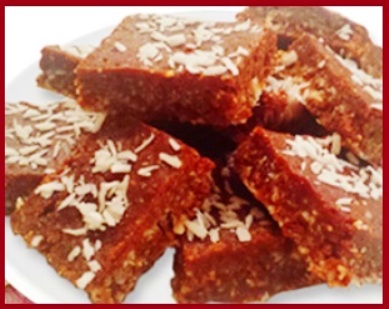
Christmas Message
Posted in Uncategorized
Brain Foods and What to Avoid
In today’s day and age, everyone is looking for ways to boost performance. Having a sharp mind is key to being able to handle stressful situations or just have a deep experience of life. There are very straight forward ways of achieving a high mental acuity. The foods you do and don’t eat are a great place to start. Below you will find the best brain foods and those that aren’t doing you any favors.
The best foods for brain health are full of antioxidants, provide building blocks for neurotransmitters, and help to make sure blood sugar remains stable. These are all crucial factors to consider when deciding if you are consuming.

Coffee
Caffeine provides a stimulatory effect in the brain by blocking a neurotransmitter called adenosine. Adenosine is a molecule that creates feelings of tiredness. By blocking adenosine, we get a boost in energy. Throughout the day adenosine levels rise which will stimulate feelings of tiredness later in the day. Studies have shown that coffee can improve mood, memory, and learning (1, 2).
Caffeine isn’t the only benefit of coffee, however. Coffee also contains powerful antioxidants called polyphenols that lower inflammation and boost mitochondrial function. Finally, a dose of black coffee in the morning has been shown to improve fatty acid metabolism which makes it a great ketosis companion (3). Implementing a daily intermittent fast with a cup of coffee in the morning can be a great fat burning strategy.
While some people may metabolize caffeine slowly and may struggle with even an occasional cup of coffee, there is no disputing the researched benefits of coffee on mental health for the majority of individuals. It is important to remember that caffeine is a diuretic and you should replace the amount of caffeinated beverage you consume with an equal amount of water to keep your brain sharp!

Grass-fed Beef, Lamb, and Bison
Red meats are underrated sources of nutrition. When these animals are raised on pastures in the sun, their meat is loaded with good stuff. We get omega-3 fatty acids, fat-burning compounds like carnitine and carnosine, as well as a full spectrum of vitamins and minerals.
L-carnitine is an amino acid that acts as a carrier to shuttle fatty acids into cells for energy. This action improves energy production which is powerful for the brain and body.
Carnitine also provides something called an acetyl group (acetyl-L-carnitine) that helps with the production of acetylcholine. Acetylcholine is a neurotransmitter that is critical for memory. Research has shown that improving carnitine levels in the body may have a protective effect against Alzheimer’s (4).
An excellent source of the highest quality grass-fed beef, wild game, pasture-raised poultry, wild-caught salmon and a wide variety of organ meats is US Wellness Meats

Wild Caught Sockeye Salmon
Sockeye salmon is the superfood of meats. It is absolutely packed with nutrition. It is also high in omega 3 fats and one of nature’s most powerful antioxidants, astaxanthin. The brain is made up of 60% fat and 10-15% of that fat is DHA (an omega 3). Getting adequate amounts of DHA in the diet is critical for brain health.
Salmon, like most meats, also contains saturated fats and cholesterol, two other extremely important structural components of brain tissues. In fact, higher levels of cholesterol are associated with better mental health in old age.
Astaxanthin is a red-pigmented antioxidant that gives salmon its distinctive color. It is believed that the high levels of astaxanthin are what allow salmon to complete rigorous swims upstream for hours at a time. In humans, it is believed that astaxanthin improves brain function by lowering oxidative stress in the brain while promoting the formation of new brain tissue!

Apple Cider Vinegar (ACV):
ACV is a powerful tonic loaded with incredible living nutrients. The ACV should be raw, unpasteurized with the “mother” intact. The mother is the portion of the apple that is fermented and contains the source of the good bacteria and enzymes. These enzymes help the body heal and digest nutrients from other foods.
ACV is also a rich source of organic acids which help with insulin sensitivity and decreasing inflammation. The good bacteria enhance nutrient assimilation and overall gut function. Use ACV on meat, brown rice, vegetables and other foods. It can also be put into a variety of different drinks for added anti-oxidants and enzymes.
Avocado
Avocados are high in healthy fats in addition to being great sources of antioxidants and minerals. Altogether they are one of the most versatile and complete brain foods. One nutrient of significance is lutein. Lutein is an antioxidant that has been shown in studies to slow cognitive decline (5).
Avocados are perfect for improving lutein levels in the brain because fats improve its absorption! Avocados are also great for lowering inflammation throughout the body which naturally improves cognitive function!

Citrus
Citrus fruits contain two very important compounds for the brain, Vitamin C and bioflavonoids. Together these compounds improve circulation and help to reinforce connective tissue throughout the body. This helps to oxygenate the deep regions of the brain that are critical for cognitive processing and sensory acuity.
On top of that, they improve immune function and fight oxidative stress. The resulting benefit is inflammation lowers and the brain can function with less interference.
Some preliminary research is also showing that Vitamin C plays a very important role in eye health and GABA receptor actions. GABA is a neurotransmitter in the brain responsible for allowing us to relax – which is vital for mental health and performance.
Stick with low sugar citrus fruits like lemons, limes, and grapefruits for maximum benefits as sugar and vitamin c compete for the same receptors in the body.

Rosemary
In ancient Rome, it is written that students would use sprigs of rosemary in school to enhance memory and learning. They may have been on to something. Rosemary contains aromatic compounds that increase blood flow to the brain simply by inhaling them!
Setting up an essential oil diffuser with rosemary oil in your home or place of work can be great for stimulating the brain. In fact, rosemary has been shown to provide anti-depressant and memory boosting effects through its powerful polyphenols.

Turmeric
Turmeric is a super spice which seems to help with just about everything. It lowers inflammation throughout the body and protects the brain from damage. In fact, turmeric has been studied extensively for its beneficial implications in dementia and Alzheimer’s disease (6).
Specifically, curcumin has been studied and shown to have the following effects: (7)
- Inhibit the formation of amyloid-beta proteins
- Increased neurogenesis
- Enhanced brain self-repair

Raw Cacao
Raw cacao is what is heavily processed and eventually turned into commercially available chocolate. Cacao in its raw form is one of the best brain foods you can eat. Not only does it help improve blood flow to the brain, but it also improves mood.
Raw cacao is packed with valuable nutrients like magnesium, polyphenols, flavonoids, and the amino acid theobromine. Theobromine upregulates a pathway in the body named cAMP. Through this action, cacao helps to down-regulate inflammation and dilate blood vessels to improve blood flow to the brain (8).

Blueberries
Blueberries are a superfood, plain and simple. They are one of the highest sources of a powerful class of antioxidants called anthocyanins. Anthocyanins promote the health of blood vessels and enhance the effects of Vitamin C discussed earlier.
Additionally, anthocyanins are powerful for protecting the brain from oxidative stress and promoting brain health. In fact, studies have shown that the regular intake of blueberries can improve memory and learning while reducing symptoms of depression (9, 10,11).

Ashwagandha:
This exotic herb has powerful antioxidant properties that protect the brain and nervous system. Premature aging associated with chronic tension on the nervous system is related to increased oxidative stress. In the largest human trial using ashwagandha the herb was shown to reduce cortisol levels up to 26%. Chronically elevated cortisol increases inflammatory and degenerative processes in the body.
This herb has been shown in studies to have as strong an anti-anxiety and anti-depressant effect as leading name brand medications. Ashwagandha has been shown to support the regeneration and reconstruction of nerve cells and synapses. This suggests that ashwagandha could help reverse states of brain and nervous system degeneration. This makes it a potent defense against dementia, Alzheimer’s disease and other neurodegenerative disorders.
You can get Ashwagandha as a fresh or dried herb or in organic herbal teas. You can also get it from professional grade supplements such as our Cortisol Defense here

Chia Seeds:
Chia is made up of healthy fats, anti-oxidants clean proteins and fiber. Chia contains no sugar and very minimal amounts of non-fibrous carbohydrates. Chia also contains high levels of calcium, magnesium and potassium. This combination is perfect for healthy blood sugar levels and sustained energy.
Chia is loaded with omega 3 fatty acids and neuroprotective anti-oxidants such as quercetin, caffeic and chlorogenic acid. These essential fats and anti-oxidants produce cell membranes that are more flexible and efficient. Healthier cell membranes results in more efficient nutrient delivery systems and faster nerve transmission processes. This improves brain function including memory and concentration.
Ginger:
This is an important part of a de-inflaming, natural pain-relief program. The compound 6-gingerol has been shown to significantly inhibit the production of a highly reactive nitrogen molecule, nitric oxide, which quickly forms a dangerous free radical peroxynitrite. Additionally, ginger helps to protect the body’s stores of glutathione – the master anti-oxidant.
Ginger is also very high in potassium which aids in electrical energy production and detoxification. It is a great source of manganese which protects the lining of key blood vessels that oxygenate and bring fuel to the brain. Manganese deficiencies can lead to dementia and stroke.

Pastured Eggs
Pastured eggs are natures multi-vitamin. They contain omega 3 fats, cholesterol, saturated fats, and choline. According to Iowa State researchers in 2007, 90% of the American population is choline deficient. Egg yolks and egg based lecithin’s are some of the richest and most bioavailable sources of choline.
Choline is important for the brain for several reasons. It helps to produce phosphatidylcholine and sphingomyelin. These two molecules make up a particularly high percentage of the brain’s total mass. Choline also helps to form a critical neurotransmitter in the brain called acetylcholine. Acetylcholine is the body’s primary molecule for sending messages between nerves & muscles.
Choline also helps protect the body’s stores of folate which is a key B vitamin for the development and maintenance of the nervous system. Finally, choline has important anti-inflammatory properties called methylation. This process of methylation plays a significant role in many chemical events which actually turn certain genes on and off in the body.
Eggs are king of the brain foods. They contain just about everything you need for healthy brain tissue. The key is to combine them with other brain foods like blueberries, avocado, and the other foods on this list to protect all that healthy brain tissue from being damaged!
Coconut Oil
Healthy fats are key for brain health. The brain is practically made of fats. Saturated fats in particular are important for the brain. Coconut oil is an excellent source of saturated fats.
In addition to saturated fats, coconut oil contains valuable medium chain triglycerides (MCT) which promote the formation of ketones in the body. Periodically shifting your body into a state of ketosis is extremely powerful for keeping your brain young and functioning at a high level.


Grass-fed Butter
Wait, butter is on a list of brain foods?? This is most people’s reaction. Butter is actually super nutritious and contains healthy saturated fats and cholesterol the body needs to build new brain tissue.
In addition to this, butter contains butyrate and conjugated linoleic acid (CLA). Butyrate helps to promote a healthy gut while conjugated linoleic acid is highly anti-inflammatory. CLA is also powerful for stimulating fat burning. In conjunction with a ketogenic lifestyle, butter is a very important food for the brain.

Leafy Greens
Most nutritionally dense foods are brain foods. Leafy greens are excellent because they contain a wide array of macro and micronutrients like magnesium, Vitamin A, Vitamin C, Vitamin K, folate, B6, copper, potassium, and calcium.
Leafy greens also contain chlorophyll. Chlorophyll is a green pigment that gently detoxifies the blood and helps the body absorb and create energy from sunlight (12)!

Olive Oil
Olives and olive oil are underrated. Olives are actually high in polyphenols that are antioxidants that boost mitochondrial function. They are also a great source of monounsaturated fats and vitamin E.
Higher levels of olive and olive oil intake are correlated with improved mental health such as with the Mediterranean diet. Olive oil is also a great source of Vitamin K, which in conjunction with Vitamins C and E, have a protective effect over brain diseases like Alzheimer’s.

Green Tea
Green tea made the list of brain foods for many reasons. It has just a small amount of caffeine which has benefits of its own. In addition, green tea contains an amino acid called l-theanine. L-theanine helps to promote feelings of calm and relaxation. Additionally, L-theanine seems to have a vasodilation effect that counteracts the vasoconstrictive effects of caffeine, improving blood flow to the brain.
Green tea is also high in an antioxidant called EGCG. This antioxidant has been studied for benefits including brain health, anti-cancer, immune boosting, anti-inflammatory, and a lot more. Bottom line, you need more EGCG in your life!

TOP FOODS TO AVOID
When it comes to brain foods, there certain foods that you should definitely avoid for optimal brain performance. You can eat all the eggs and salmon you want, but if you’re eating a lot of these foods then you may not see the benefits you should.
The following are food groups that you should avoid for optimal brain health.

Refined Carbs & Sugar
First and foremost, refined carbs and sugar are one of the worst brain foods. Sugars tend to send blood sugar skyrocketing only to come crashing back down shortly after. This pattern is highly inflammatory and sets off cortisol to help re-stabilize. When this happens chronically, insulin resistance can develop which is highly correlated with brain diseases later in life.
High amounts of sugar also feed opportunistic bacteria and yeast in the digestive tract. For example, candida loves sugar. High levels of candida can be absolutely toxic for the body. This is largely because candida produces waste products that are toxic to the brain.

Omega-6 Oils
As we have discussed, healthy fats are incredibly important for brain tissue. Saturated fats, omega-3 fats, and cholesterol are play important roles in the formation of healthy brain tissue. When we consume a high amount of vegetable, canola, corn, and other highly processed oils, it promotes an inflammatory environment in the body.
Additionally, it is likely that in the absence of adequate healthy fats, the body will resort to building brain tissue with what it can get ahold of. Ditch the processed vegetable oils, instead opt for the fats and oils listed in the picture below.

Non-Organic Produce
Some people see organic food as a fad, I see it as a no-brainer (see what I did there). You see, pesticides, herbicides, and different chemicals used in pest control are harmful for humans. They can disrupt the bacterial balance of the gut and leach critical minerals from the body.
Disrupting the gut microbiome already has important implications for brain health. On top of this, many of these chemicals leach things like magnesium from the body. Magnesium is vital to over 300 different processes in the body, including the activation of ATP. ATP is the energy molecule cells use to run themselves and the brain has a disproportionately huge demand for ATP!

Unfermented Soy
Oftentimes, people are led to believe that soy is a healthy food. Especially women are led to believe it can be beneficial because it contains estrogen-mimicking compounds. In reality, having excess estrogen is not good for either sex. In fact, studies have documented the worsening of menopausal symptoms with soy consumption (13).
Symptoms of excessive estrogen include fatigue, depression, and brain fog. Small amounts of fermented soy like tempeh, miso, and natto can all be great in moderation.

Grains
Grains are the opposite of brain foods. Gluten containing grains in particular are especially damaging to the brain. Gluten and pesticides often prayed on grains are highly inflammatory to the gut lining. Over time these things can damage the protective barrier of the gut and begin poorly regulating what gets through.
This process leads to something called leaky gut. It is often said that a leaky gut equals a leaky brain. I see this all the time when someone has leaky gut, they are almost always suffering from some level of cognitive dysfunction.


8 Brain-Boosting Recipes
To finish off this article and get you started on a brain-boosting diet, I have put together a small list of some amazing recipes featuring powerful brain foods. These are recipes designed to lower inflammation and provide the brain with the building blocks it needs to perform and stay healthy.
The first thing to consider before implementing these recipes is a ketogenic lifestyle. Getting your body into a fat burning stage is probably ht most powerful step in regaining brain health.
**NOTE: Simply click on the pictures below each recipe description to go to the recipe page!

Turmeric Fat Burning Coffee
This coffee recipe is delicious and absolute brain fuel. This is something I highly encourage my coffee lovers who follow a ketogenic diet to drink in the morning. It is great to stick with something like this as a breakfast replacement to help boost ketones in the morning and place the body in a fat-burning state that also boosts the brain tremendously.
Featured Brain Foods
- Coffee
- Turmeric
- MCT Oil (Coconut Oil)
- Grass-fed Butter
Keto Matcha Green Tea
If you’re more of a tea person over coffee, then this keto matcha can be another great morning option. It is similar to the turmeric fat burning coffee but with the unique benefits of green tea which contains the calming amino acid, L-theanine.
Featured Brain Foods
- Matcha Green Tea
- Coconut Oil
- Grass-fed Butter
- Bone Broth (Optional)
Blueberry Pudding
I am a big fan of using liquid nutrition in the form of smoothies and puddings. This is because it is super easy to digest which cuts down on energy requirements needed for digestion. When people do liquid meals for breakfast and lunch they often notice much more stable energy levels throughout the morning. This Blueberry pudding is also loaded with brain foods.
Featured Brain Foods
- Coconut Fats
- Avocado
- Blueberries
- Bone Broth
- Bonus Brain Food: Chia Seeds
Fat Burning Deviled Eggs
Eggs are one of the most perfect brain foods. They are also easy to make and are a great staple for any meal. These are sure to fill you up and keep your brain humming. The eggs provide valuable choline to support learning and memory while the other ingredients are anti-inflammatory and full of healthy fats!
Featured Brain Foods
- Eggs
- Avocado Oil (in the mayo)
- Olive Oil
- Coconut Oil
- Turmeric
Naked Kale Burger Sauté
This recipe is super simple and requires very minimal prep work. It is great as a dinner meal and provides everything you need to support brain health. Burgers are a classic comfort food, unfortunately the bun and meat typically used are not good for the brain. Take away the bun and use some pastured beef instead!
Featured Brain Foods
- Grass-fed Beef
- Kale
- Bell Peppers (Source of Vitamin C)
- Avocado
- Coconut Oil
- Olive Oil

Creamy Lemon Superfood Guacamole
Whenever you want a heart megadose of brain food, reach for this guacamole recipe. I took a traditional guacamole and made it a brain nourishing superfood.
Featured Brain Foods
- Avocado
- Lemon
- Coconut Fats
Coconut Chocolate Cream Cups
Sweet treats can be brain food too. These chocolate cream cups are keto friendly and a simple way to get in nutrition for the brain. These can be used as an anytime snack or even as a dessert. The use of stevia or monk fruit cuts out the concerns of sugar while satisfying your sweet tooth.
Featured Brain Foods
- Coconut Fats
- Raw Cacao
 Super Brain Salmon Burgers
Super Brain Salmon Burgers
Looking for a new way to cook salmon? These burgers are tasty, easy to make, and a great way to feed the brain. Serve them alongside some chopped avocado and leafy greens and you’ve got yourself a super meal!
Featured Brain Foods
- Salmon
- Eggs
- Bonus Brain Food: Chia Seeds
Navigating the Ketogenic Diet
Using the foods and recipes above in conjunction with a ketogenic diet will be one of the most powerful strategies for improving and protecting your brain health. This dietary approach aims to stabilize blood sugar and promote the body to burn fats as a primary energy source.
Implementing this lifestyle is fairly simple but can be overwhelming when you are just starting out. That is why I have created the Navigating the Ketogenic Diet Online course to guide you through the process. This program provides lifetime access to a grocery list, recipes, meal plans, and extensive e-guides filled with information to optimize your health using this dietary strategy. To find out more, click on the banner below.
THANK YOU DR JOCKERS FOR ANOTHER FANTASTIC ARTICLE
*******
Sources for this Article Include
1. Tenore GC, Daglia M, Orlando V, et al. Coffee and Depression: A Short Review of Literature. Curr Pharm Des. 2015;21(34):5034-40. PMID: 26303345
2. Islam MT, Tabrez S, Jabir NR, et al. An Insight into the Therapeutic Potential of Major Coffee Components. Curr Drug Metab. 2018;19(6):544-556. PMID: 29512445
3. Vandenberghe C, St-pierre V, Courchesne-loyer A, Hennebelle M, Castellano CA, Cunnane SC. Caffeine intake increases plasma ketones: an acute metabolic study in humans. Can J Physiol Pharmacol. 2017;95(4):455-458. PMID: 28177691
4. Bianchetti A, Rozzini R, Trabucchi M. Effects of acetyl-L-carnitine in Alzheimer’s disease patients unresponsive to acetylcholinesterase inhibitors. Curr Med Res Opin. 2003;19(4):350-3. PMID: 12841930
5. Johnson EJ. A possible role for lutein and zeaxanthin in cognitive function in the elderly. Am J Clin Nutr. 2012;96(5):1161S-5S. PMID: 23053547
6. Talbot K. Brain insulin resistance in Alzheimer’s disease and its potential treatment with GLP-1 analogs. Neurodegener Dis Manag. 2014;4(1):31-40. PMID: 24640977
7. Hügel HM. Brain Food for Alzheimer-Free Ageing: Focus on Herbal Medicines. Adv Exp Med Biol. 2015;863:95-116. PMID: 26092628
8. Deree J, Martins JO, Melbostad H, Loomis WH, Coimbra R. Insights into the regulation of TNF-alpha production in human mononuclear cells: the effects of non-specific phosphodiesterase inhibition. Clinics (Sao Paulo). 2008;63(3):321-8. PMID: 18568240
9. Spencer JP. The impact of fruit flavonoids on memory and cognition. Br J Nutr. 2010;104 Suppl 3:S40-7. PMID: 20955649
10. Spencer JP. The impact of flavonoids on memory: physiological and molecular considerations. Chem Soc Rev. 2009;38(4):1152-61. PMID: 19421586
11. Shewale PB, Patil RA, Hiray YA. Antidepressant-like activity of anthocyanidins from Hibiscus rosa-sinensis flowers in tail suspension test and forced swim test. Indian J Pharmacol. 2012;44(4):454-7. PMID: 23087504
12. Xu C, Zhang J, Mihai DM, Washington I. Light-harvesting chlorophyll pigments enable mammalian mitochondria to capture photonic energy and produce ATP. J Cell Sci. 2014;127(Pt 2):388-99. PMID: 24198392
13. Levis S, Griebeler ML. The role of soy foods in the treatment of menopausal symptoms. J Nutr. 2010;140(12):2318S-2321S. PMID: 21047930
*******
Microwaves and Plastic a Dangerous Combination
I don’t recommend storing your food in plastic or cooking it in a microwave, but if you’re going to use either, at least don’t use them together. Microwaving food in a plastic container virtually guarantees that your food will be contaminated with plastics chemicals that have leached into your food during the heating process.
There’s no arguing that plastic is convenient, inexpensive, and virtually unbreakable, making it tempting to use for food storage, especially while you’re out and about. However, though it seems perfectly safe, plastic is made with a veritable stew of chemicals.
What’s Lurking in Your Plastic Containers?
Depending on what product you’re using, your plastic might contain phthalates, for starters. Phthalates are a group of “gender-bending” chemicals causing males of many species to become more female.
These chemicals have disrupted the endocrine systems of wildlife, causing testicular cancer, genital deformations, low sperm counts, and infertility in a number of species, including polar bears, deer, whales, and otters, just to name a few.
In humans, phthalates have been linked to preterm birth and neurobehavioral problems in infants after in-utero exposure.1 They’ve also been found to increase blood pressure levels,2 and high urinary levels are associated with insulin resistance, which can lead to diabetes.3
Plastic containers may also contain bisphenol-A (BPA) or any one of its similar “replacement” chemicals, including BPS (there’s also Bisphenol B, C, E, F, G, M. P, PH, TMC, and Z).
While the replacement chemicals haven’t been widely studied, BPA is a known endocrine disruptor that’s been linked to a number of health concerns, particularly in pregnant women, fetuses, and young children, but also in adults, including:
Structural damage to your brain Changes in gender-specific behavior and abnormal sexual behavior Hyperactivity, increased aggressiveness, and impaired learning Early puberty, stimulation of mammary gland development, disrupted reproductive cycles, ovarian dysfunction, and infertility Increased fat formation and risk of obesity Stimulation of prostate cancer cells Altered immune function Increased prostate size and decreased sperm production What else might be lurking in your plastic? Commercial-grade cling wrap (which may be used to wrap cheese or other deli items) may be made from polyvinyl chloride (PVC), which is known to cause cancer. The manufacture of PVC also leads to the formation of dioxin, another carcinogen.
Styrofoam food trays, egg cartons, carryout containers, and opaque plastic cutlery may contain yet another chemical known as styrene, which has been classified as a possible human carcinogen by the International Agency for Research on Cancer (IARC).
Heating Accelerates the Transfer of Chemicals to Your Food
In a study of common plastic products, 70 percent tested positive for estrogenic activity, which means they’re capable of disrupting your hormone levels.4 However, that was before researchers subjected them to conditions in which they’re actually used.
Under real-world conditions like running the plastics through a dishwasher or heating them in a microwave, 95 percent tested positive for estrogenic, hormone-disrupting activity.
While regular use, such as washing in a dishwasher and scratches, has been found to increase the rate of chemical leaching, heat appears to be the worst offender of all, increasing the rate of chemical transfer by up to 55-fold. As written in the journal Toxicology Letters:5
“Using a sensitive and quantitative competitive enzyme-linked immunosorbent assay, BPA was found to migrate from polycarbonate water bottles at rates ranging from 0.20 ng/h to 0.79 ng/h.
At room temperature the migration of BPA was independent of whether or not the bottle had been previously used. Exposure to boiling water (100 degrees C) increased the rate of BPA migration by up to 55-fold.”
In the US, the National Institute of Environmental Health Science recommends consumers avoid microwaving food in plastic containers because heat increases the likelihood of chemical leaching.6
Plastic ‘Microwaveable’ Containers Increase Your Risk of High Blood Pressure
The US Food and Drug Administration (FDA) recommends any plastic containers you use in the microwave should be labeled for microwave oven use.7 But such containers may not be much safer than standard plastics.
“Microwaveable” containers may be formulated with supposedly “safer” chemicals. Diisononyl phthalate (DINP) and diisodecyl phthalate (DIDP), for instance, have been used to replace di-2-ethylhexylphthalate (DEHP), an endocrine-disrupting phthalate known to cause reproductive toxicity.
DEHP is highly lipophilic (fat soluble), and when used in PVC plastic is only loosely chemically bonded to the plastic. It readily leaches into blood (when used in IV tubing, for example) or other lipid-containing solutions in contact with the plastic.
DINP and DIDP have been touted as safer alternatives, but they, too, have been linked to health concerns, including high blood pressure.8 Microwaving food in #7 polycarbonate plastic, in particular, should be avoided, even if it is labeled microwave-safe.
According to the National Resources Defense Council (NRDC):9
“What the term ‘microwave-safe’ basically means is that any chemicals leaching from the container into food do so at levels far below those shown to have any health effects.
There is cause to be wary of this claim, however. In particular, #7 polycarbonate plastic should not be used in a microwave, even if it is labeled ‘microwave-safe,’ because it leaches hormone-disrupting bisphenol A (BPA), especially when heated.”
I would expand this to say that there is really no such thing as “microwave-safe” plastic. There are many chemicals that could potentially leach into your food, and it’s unclear which are tested for and what levels are deemed “safe” for consumption.
For instance, the Nutrition Action Newsletter reported the leakage of numerous toxic chemicals from the packaging of common microwavable foods, including pizzas and popcorn. Chemicals included polyethylene terephthalate (PET), benzene, toluene, and xylene.
Microwaving fatty foods in plastic containers also leads to the release of dioxins and other toxins into your food.10,11 You’re far better off heating your food in glass or ceramic containers – and not in a microwave at all.
Why You Might Want to Rethink Microwave Cooking
At the very least, banish all plastic products (containers, plastic wrap, food wraps, etc.) from ever seeing the inside of your microwave. Even better, banish your microwave altogether.
Microwaves heat food by causing water molecules in it to resonate at very high frequencies and eventually turn to steam, which heats your food. While this can rapidly heat your food, it also causes a change in your food’s chemical structure. The first thing you probably noticed when you began microwaving food was how uneven the heating is.
“Hot spots” in microwaved food can be hot enough to cause burns — or build up to a “steam explosion.” This has resulted in admonitions to new mothers about NOT using the microwave to heat up baby bottles, since babies have been burned by super-heated formula that went undetected (not to mention the issue with plastic toxins leaching into the milk).
Microwaving distorts and deforms the molecules of whatever food or other substance you subject to it. An example of this is blood products. Blood is normally warmed before being transfused into a person. Now we know that microwaving blood products damages the blood components.
In fact, one woman died after receiving a transfusion of microwaved blood in 1991, which resulted in a well-publicized lawsuit. Further, when you heat food in a microwave, it can zap the nutrition right out of your food. Some excellent scientific data has been gathered regarding the detrimental effects of microwaves on nutrients:
- A study published in the November 2003 issue of The Journal of the Science of Food and Agriculture found broccoli “zapped” in the microwave with a little water lost up to 97 percent of its beneficial antioxidants.
By comparison, steamed broccoli lost 11 percent or fewer of its antioxidants. There were also reductions in phenolic compounds and glucosinolates, but mineral levels remained intact.12
- In a study of garlic, as little as 60 seconds of microwave heating was enough to inactivate its alliinase, garlic’s principle active ingredient against cancera.13
- A Japanese study that just 6 minutes of microwave heating turned 30-40 percent of the B12 in milk into an inert (dead) form.14
- An Australian study showed that microwaves cause a higher degree of “protein unfolding” than conventional heating.15
- Microwaving can destroy the essential disease-fighting agents in breast milk that offer protection for your baby. In one study, microwaved breast milk lost lysozyme activity, antibodies, and fostered the growth of more potentially pathogenic bacteria.16
19 Tips to Reduce Your Chemical Exposure at Home
In the US, chemicals are considered safe until proven otherwise. You don’t want to risk your health by exposing yourself to these toxins unnecessarily, especially in your food but also in your personal care products and goods around your home. Implementing the following measures will help you avoid the worst endocrine-disrupting culprits as well as other chemicals from a wide variety of sources. To sum it up, try to stick with whole foods and natural products around your home.
The fewer ingredients a product contains, the better, and try to make sure anything you put on or in your body – or use around your home – contains only substances you’re familiar with. If you can’t pronounce it, you probably don’t want it anywhere near your family.
- As much as possible, buy and eat organic produce and free-range, organic meats to reduce your exposure to added hormones, pesticides, and fertilizers. Also avoid milk and other dairy products that contain the genetically engineered recombinant bovine growth hormone (rBGH or rBST).
- Rather than eating conventional or farm-raised fish, which are often heavily contaminated with PCBs and mercury, supplement with a high-quality omega 3, or eat smaller fish or fish that is wild-caught and lab tested for purity. Wild caught Alaskan salmon is about the only fish I eat for these reasons.
- Buy products that come in glass bottles or jars rather than plastic or canned, since chemicals can leach out of plastics and into the contents.
- Store your food and beverages in glass rather than plastic, and avoid using plastic wrap.
- Use glass baby bottles and avoid plastic sippy cups for your little ones.
- Eat mostly raw, fresh foods. Processed, prepackaged foods (of all kinds) are a common source of chemicals such as BPA and phthalates.
- Replace your non-stick pots and pans with ceramic or glass cookware.
- Filter your tap water — both for drinking and bathing. If you can only afford to do one, filtering your bathing water may be more important, as your skin absorbs contaminants. To remove the endocrine-disrupting herbicide Atrazine, make sure the filter is certified to remove it. According to the Environmental Working Group (EWG), perchlorate can be filtered out using a reverse osmosis filter.
- Look for products that are made by companies that are earth-friendly, animal-friendly, green, non-toxic, and/or 100% organic. This applies to everything from food and personal care products to building materials, carpeting, paint, baby items, upholstery, and more.
- Use a vacuum cleaner with a HEPA filter to remove house dust, which is often contaminated with traces of chemicals.
- When buying new products such as furniture, mattresses, or carpet padding, ask what type of fire retardant it contains. Be mindful of and/or avoid items containing PBDEs, antimony, formaldehyde, boric acid, and other brominated chemicals. As you replace these toxic items around your home, select those that contain naturally less flammable materials, such as leather, wool, and cotton.
- Avoid stain- and water-resistant clothing, furniture, and carpets to avoid perfluorinated chemicals (PFC’s).
- Minimize your use of plastic baby and child toys, opting for those made of natural wood or fabric instead.
- Only use natural cleaning products in your home or make your own. Avoid products that contain 2-butoxyethanol (EGBE) and methoxydiglycol (DEGME) — two toxic glycol ethers that can damage fertility and cause fetal harm.17
- Switch over to organic brands of toiletries such as shampoo, toothpaste, antiperspirants, and cosmetics. You can replace many different products with coconut oil and baking soda, for example. EWG has a great database18 to help you find personal care products that are free of phthalates and other potentially dangerous chemicals. I also offer one of the highest quality organic skin care lines, shampoo and conditioner, and body butter that are completely natural and safe.
- Replace feminine hygiene products like tampons and sanitary pads with safer alternatives.
- Avoid artificial air fresheners, dryer sheets, fabric softeners, or other synthetic fragrances.
- Look for products that are fragrance-free. One artificial fragrance can contain hundreds – even thousands – of potentially toxic chemicals.
- Replace your vinyl shower curtain with one made of fabric.
SOURCE: Dr. Mercola
******
Posted in Uncategorized
Detoxifying Turmeric Smoothie
ANTI-INFLAMMATORY GOLDEN MILK
INGREDIENTS:
1 cup of full fat organic coconut milk
1 tsp of turmeric
½ tsp of ginger
½ tsp of vanilla
Pinch of black pepper
Organic Raw Honey to taste
Cinnamon (optional)
INSTRUCTIONS:
- Step 1: In a saucepan add all ingredients and whisk to combine.
- Step 2: Heat over medium heat until it starts to bubble, then turn heat down to low and simmer for about 5 Minutes so the flavors get well mixed.
- Step 3: Add 1 tsp of coconut oil and a pinch of Himalayan salt and stir.
- Step 4: Optional, sprinkle with cinnamon and enjoy!
COCONUT MILK is full of healthy fats and contains lauric acid, antimicrobial lipids and capric acid, which have antibacterial, anti-fungal and antiviral properties. Coconut milk and all coconut products are one of the most powerful foods for hormonal balance. These fats will also fuel your brain, give you energy, and take away sugar cravings.
Read more about the benefits of coconut milk here.
TURMERIC is a true super herb. It is incredibly detoxifying and anti-inflammatory. It supports your liver and kills cells that may be harming your body. This in turn can improve skin and digestion as well as prevent disease and sickness in the future. Turmeric has been shown to kill cancer cells, boost blood circulation and reduce the pain and fever associated with illness.
Read more about the benefits of turmeric here.
NOTE: Turmeric milk is a traditional Indian beverage that is commonly referred to as “Golden Milk” because of its healing properties. It is very soothing, and will help your body detox throughout the night.
The absorption of turmeric is actually enhanced when combined with black pepper. This drink will take good care of your body.
ENJOY!
Preparation time 5 minutes
Cooking time 10 minutes
Servings about 1 cup
SOUCES:
ACKNOLEDGEMENT: Thank you for the photos Dr. Jockers and Wellness Mama
*******
Posted in Anti-Inflamatory, ANTI-INFLAMMATORY GOLDEN MILK, Antibacterial, Coconut Milk, Coconut Oil, Fats, Good fats, Honey - Raw, Improve Immune System, Improve Your Liver Health Naturally, Turmeric, Vanilla Extract | Tags: Aids digestion, Anti-Inflammator Properties, ANTI-INFLAMMATORY GOLDEN MILK, Coconut Milk, Ginger, Good for skin - joints and nails, increase blood circulation, reduces pain, Turmeric
How Sugar Feeds Cancer Growth
ORANGE PISTACHIO BARS – RAW
CHOCOLATE OR CAROB COCONUT BARS
TOP 10 ANTI-INFLAMATORY SUPER FOODS
My Top 10 Anti-Inflammatory SuperFoods
Inflammation is an immunological process of self-repair in which the body works to destroy abnormal pathogens, dead cells and abnormal tissue. When inflammation becomes a chronic condition, it becomes more destructive to the body and can cause major health problems. Controlling inflammation through nutrition and lifestyle has to be a central focus to achieve your health goals.
I believe deep within my spirit that God created us for incredible health & vitality and desires for us to look to nature to provide the resources for health & well-being. Here are 10 of the most important anti-inflammatory foods.
Here is the link to the above video.
1. Coconut Oil:
This superfood is loaded with healthy fats, including lauric acid which is found in a high quantity within mother’s milk. Coconut fats help you to burn fat, improve brain function and reduce whole body inflammatory levels. It is great to consume in your shakes and smoothies and you can put it on your skin and the components will cross into your blood stream transdermally.(1, 2, 3)
I recommend using coconut oil to cook with because it cannot be denatured under high heat. If you don’t like the coconut flavor than use a high quality MCT oil which has all the same benefits but no coconut flavor.
2. Coconut Water Kefir:
This is fermented coconut water. Coconut water is naturally rich in potassium but it also contains a good amount of sugars. The fermentation process breaks down sugar and adds B vitamins, live enzymes and probiotics.
Coconut water kefir is EXCELLENT for your digestive system and is well-tolerated by most people. If you are experienced with it, you can drink a bottle at a time. If you are new to fermented foods and drinks or have a serious digestive issue, it is better to begin with 1-2 tbsps per day.
3. Ginger:
Ginger is composed of several volatile oils that are powerful anti-bacterial, anti-viral, anti-fungal, anti-parasitic agents. In addition, it inhibits cancer cell formation while firing up our body’s own inborn ability to destroy the cancer cells formerly present.(1)
Additionally, ginger helps protect the bodies stores of the super anti-oxidant & free radical destroyer. Ginger is also a powerful anti-nausea agent and improves the production of digestive juices (stomach acid, bile and pancreatic enzymes) to enhance digestion.(2, 3)
- Drink a cup of organic ginger tea everyday
- Grate fresh ginger or use dried ginger on your salad, meat and steamed veggies
- Drink ginger coconut water kefir (Kevita brand – Lemon Ginger is excellent)
- Get ginger root and put an inch or so in per 8oz of juice. Anymore can give too much bite.
4. Lemon:
Lemon is loaded with vitamin C, citrus bioflavonoids (vitamin P), live enzymes and potassium. It is one of the best things to help the liver and kidneys to detoxify and it improves circulation and cellular oxygenation.
I recommend using fresh squeezed lemon or lemon essential oil in your water each morning (and throughout the day if possible) to improve liver cleansing.
I also recommend squeezing lemon on your meat and veggies in order to allow the enzymes and citric acid to begin metabolizing these things before consuming them. Additionally, lemon helps to stimulate stomach acid, bile and pancreatic enzyme production for more optimal digestion.
5. Avocados:
Avocados are full of healthy fats, potassium and magnesium. They are also rich in carotenoid anti-oxidants that reduce inflammation in the body. The good fats help produce ketones and improve fat burning. (1, 2, 3)
My favorite ways to use avocados include putting them into shakes to make puddings and chocolate mousse. I also LOVE making a great guacamole and I enjoy avocado salads. I consume 1-2 avocados on most days and recommend for the majority of my clients to consume an avocado each day.
6. Himalayan Sea Salt:
High quality Himalayan sea salt contains over 84 trace minerals and a unique energetic frequency that enhances cellular function. Most other salts are highly processed and refined and not well-utilized by the body.
Himalayan pink salts help reduce edema, swelling, cellulite and they balance blood pressure. Lower carbohydrate diets need more healthy salts because their body doesn’t retain sodium like we do when we consume a higher carbohydrate diet.
I put them on my foods generously. I tell my clients that if they are craving salts, than they are most likely trace mineral deficient and it is important to use more of these good salts. It is also a great energy tip to take a pinch of pink salt and follow it with 8oz of water. This also works well to reduce asthmatic and allergy symptoms.
7. Apple Cider Vinegar (ACV):
This fermented tonic is loaded with enzymes and organic acids. It is a natural sterilizing agent that has been shown to improve digestive function, stabilize blood sugar, reduce inflammation and improve skin tone. (1, 2)
I use ACV like I use lemon, in water and on foods (particularly meat and vegetables) before consuming them. It helps to pre-digest the meat and veggies and reduces stress on our digestive system. ACV also helps to reduce the microbial load throughout the body and improves the use of digestive juices such as stomach acid, bile and pancreatic enzymes.(3)
8. Sprouted Pumpkin Seeds:
Sprouted pumpkin seeds are full of B vitamins, magnesium and zinc. They are one of the most nutrient dense foods on the planet and have a powerful anti-inflammatory effect on the body.
Sprouting pumpkin seeds helps to release some of the “anti-nutrients” they contain. As a result, the vitamins and minerals in pumpkin seeds become more readily digested and absorbed. To remove some of these anti-nutrients, seal a glass container with pumpkin seeds covered in water for 24 hours. Rinse the seeds and allow drying before use in cooking.
You can also purchase some Go Raw sprouted pumpkin seeds here that are incredibly tasty and enjoyable!
9. Turmeric:
Turmeric is loaded with curcuminoid anti-oxidants that powerfully reduce inflammation, improve detoxification and reduce cancer cell formation in the body. Using turmeric on your dishes is one of the best natural health strategies you can apply. (1)
I recommend using it with coconut milk for an anti-inflammatory milk, putting it on meats and in coconut cups like these. It is best absorbed when combined with good fats and a pinch of black pepper. (2, 3)
10. Organic Broth:
Bone broth from organically raised animals is loaded with bone and immune supportive nutrients. Bone broth is loaded with bone marrow where the red and white blood cells that form our blood and immune system are originally formed. It is also rich in collagen peptides which help to improve the integrity of our gut lining, skin and joints.
Bone broth is also rich in conjugated linoleic acid, also called CLA. CLA helps to reduce inflammation and stimulate fat burning. It has also been shown to be a powerful immune stimulating agent that reduces cancer growth in the body.
Ideally you will get pasture-raised chicken bones or grass-fed beef bones as that is the highest quality. You can make it from scratch with this recipe or you can purchase it pre-maid.
Sources For This Article Include:
* * * * * * *
Re-blogged from http://drjockers.com
THANK YOU DR. JOCKERS FOR ANOTHER GREAT ARTICLE
* * * * * * *
MCT Oils:
- Bach AC, Babayan VK. Medium-chain triglycerides: an update. Am J Clin Nutr. 1982 Nov;36(5):950-62. PMID: 6814231
- Medium-chain triglycerides Link Here
- Stein TP, Presti ME, Leskiw MJ, Torosian ME, Settle RG, Buzby GP, Schluter MD. Comparison of glucose, LCT, and LCT plus MCT as calorie sources for parenterally nourished rats. Am J Physiol. 1984 Mar;246(3 Pt 1):E277-87. PMID: 6422772
- Odle J. New insights into the utilization of medium-chain triglycerides by the neonate: observations from a piglet model. J Nutr. 1997 Jun;127(6):1061-7. PMID: 9187618
- Page KA, Williamson A, Yu N, et al. Medium-Chain Fatty Acids Improve Cognitive Function in Intensively Treated Type 1 Diabetic Patients and Support In Vitro Synaptic Transmission During Acute Hypoglycemia. Diabetes. 2009;58(5):1237-1244.
- Page KA, Williamson A, Yu N, et al. Medium-Chain Fatty Acids Improve Cognitive Function in Intensively Treated Type 1 Diabetic Patients and Support In Vitro Synaptic Transmission During Acute Hypoglycemia. Diabetes. 2009;58(5):1237-1244.
- Masino SA, Rho JM. Mechanisms of Ketogenic Diet Action. In: Noebels JL, Avoli M, Rogawski MA, Olsen RW, Delgado-Escueta AV, editors. Jasper’s Basic Mechanisms of the Epilepsies [Internet]. 4th edition. Bethesda (MD): National Center for Biotechnology Information (US); 2012. PMID: 22787591
- Tetrick MA, Greer FR, Benevenga NJ. Blood D-(-)-3-hydroxybutyrate concentrations after oral administration of trioctanoin, trinonanoin, or tridecanoin to newborn rhesus monkeys (Macaca mulatta). Comp Med. 2010 Dec;60(6):486-90. PMID: 21262136
- Huang WC, Tsai TH, Chuang LT, Li YY, Zouboulis CC, Tsai PJ. Anti-bacterial and anti-inflammatory properties of capric acid against Propionibacterium acnes: a comparative study with lauric acid. J Dermatol Sci. 2014 Mar;73(3):232-40. PMID: 24284257
- Marounek M, Skrivanová E, Rada V. Susceptibility of Escherichia coli to C2-C18 fatty acids. Folia Microbiol (Praha). 2003;48(6):731-5. PMID: 15058184
- Murzyn A, Krasowska A, Stefanowicz P, Dziadkowiec D, Łukaszewicz M. Capric Acid Secreted by S. boulardii Inhibits C. albicans Filamentous Growth, Adhesion and Biofilm Formation. Mylonakis E, ed. PLoS ONE. 2010;5(8):e12050.
- Kim H-J, Yoon H-J, Kim S-Y, Yoon Y-R. A Medium-Chain Fatty Acid, Capric Acid, Inhibits RANKL-Induced Osteoclast Differentiation via the Suppression of NF-κB Signaling and Blocks Cytoskeletal Organization and Survival in Mature Osteoclasts. Molecules and Cells. 2014;37(8):598-604.
- Medium-chain triglycerides Link Here
- Bergsson G, Arnfinnsson J, Steingrímsson Ó, Thormar H. In Vitro Killing of Candida albicans by Fatty Acids and Monoglycerides. Antimicrobial Agents and Chemotherapy. 2001;45(11):3209-3212.
- Takahashi M, Inoue S, Hayama K, Ninomiya K, Abe S. [Inhibition of Candida mycelia growth by a medium chain fatty acids, capric acid in vitro and its therapeutic efficacy in murine oral candidiasis]. Med Mycol J. 2012;53(4):255-61. Japanese. PMID: 23257726
- Bergsson G, Steingrímsson O, Thormar H. In vitro susceptibilities of Neisseria gonorrhoeae to fatty acids and monoglycerides. Antimicrob Agents Chemother. 1999 Nov;43(11):2790-2. PMID: 10543766
- Bergsson G, Arnfinnsson J, Karlsson SM, Steingrímsson O, Thormar H. In vitro inactivation of Chlamydia trachomatis by fatty acids and monoglycerides. Antimicrob Agents Chemother. 1998 Sep;42(9):2290-4. PMID: 9736551
- Page KA, Williamson A, Yu N, et al. Medium-Chain Fatty Acids Improve Cognitive Function in Intensively Treated Type 1 Diabetic Patients and Support In Vitro Synaptic Transmission During Acute Hypoglycemia. Diabetes. 2009;58(5):1237-1244.
- Yeh YY, Zee P. Relation of ketosis to metabolic changes induced by acute medium-chain triglyceride feeding in rats. J Nutr. 1976 Jan;106(1):58-67. PMID: 1245892
- Lavau MM, Hashim SA. Effect of medium chain triglyceride on lipogenesis and body fat in the rat. J Nutr. 1978 Apr;108(4):613-20. PMID: 24679
- Pediatrics – Medium-Chain Triglyceride Feeding in Premature Infants: Effects on Calcium and Magnesium Absorption Link Here
- Tantibhedhyangkul P, Hashim SA. Medium-chain triglyceride feeding in premature infants: effects on fat and nitrogen absorption. Pediatrics. 1975 Mar;55(3):359-70. PMID: 1170544
- Gasior M, Rogawski MA, Hartman AL. Neuroprotective and disease-modifying effects of the ketogenic diet. Behavioural pharmacology. 2006;17(5-6):431-439.
- Berning JR. The role of medium-chain triglycerides in exercise. Int J Sport Nutr. 1996 Jun;6(2):121-33. PMID: 8744785
- Jeukendrup AE, Saris WH, Wagenmakers AJ. Fat metabolism during exercise: a review–part III: effects of nutritional interventions. Int J Sports Med. 1998 Aug;19(6):371-9. PMID: 9774203
- Stubbs RJ, Harbron CG. Covert manipulation of the ratio of medium- to long-chain triglycerides in isoenergetically dense diets: effect on food intake in ad libitum feeding men. Int J Obes Relat Metab Disord. 1996 May;20(5):435-44. PMID: 8696422
- Hainer V, Kunesová M, Stich V, Zák A, Parizková J. [The role of oils containing triacylglycerols and medium-chain fatty acids in the dietary treatment of obesity. The effect on resting energy expenditure and serum lipids]. Cas Lek Cesk. 1994 Jun 13;133(12):373-5. Czech. PMID: 8069895
- St-Onge MP, Bosarge A. Weight-loss diet that includes consumption of medium-chain triacylglycerol oil leads to a greater rate of weight and fat mass loss than does olive oil. Am J Clin Nutr. 2008 Mar;87(3):621-6. PMID: 18326600
Ginger:
- Park M, Bae J, Lee DS. Antibacterial activity of [10]-gingerol and [12]-gingerol isolated from ginger rhizome against periodontal bacteria. Phytother Res. 2008 Nov;22(11):1446-9. PMID: 18814211
- Rahmani AH, Shabrmi FM, Aly SM. Active ingredients of ginger as potential candidates in the prevention and treatment of diseases via modulation of biological activities. Int J Physiol Pathophysiol Pharmacol. 2014 Jul 12;6(2):125-36. eCollection 2014. Review. PMID: 25057339
- Baliga MS, Haniadka R, Pereira MM, D’Souza JJ, Pallaty PL, Bhat HP, Popuri S. Update on the chemopreventive effects of gingerand its phytochemicals. Crit Rev Food Sci Nutr. 2011 Jul;51(6):499-523 Review. PMID: 21929329
- Kundu JK, Na HK, Surh YJ Ginger-derived phenolic substances with cancer preventive and therapeutic potential. Forum Nutr. 2009;61:182-92. PMID: 19367122
- Haniadka R, Saldanha E, Sunita V, Palatty PL, Fayad R, Baliga MS. A review of the gastroprotective effects of ginger (Zingiber officinale Roscoe). Food Funct. 2013 Jun;4(6):845-55. Review. PMID:23612703
- Palatty PL, Haniadka R, Valder B, Arora R, Baliga MS. Ginger in the prevention of nausea and vomiting: a review. Crit Rev Food Sci Nutr. 2013;53(7):659-69. PMID:23638927
- Ali BH, Blunden G, Tanira MO, Nemmar A. Some phytochemical, pharmacological and toxicological properties of ginger (Zingiber officinale Roscoe): a review of recent research. Food Chem Toxicol. 2008 Feb;46(2):409-20. PMID:17950516
- Ippoushi K, Azuma K, Ito H, Horie H, Higashio H. [6]-Gingerol inhibits nitric oxide synthesis in activated J774.1 mouse macrophages and prevents peroxynitrite-induced oxidation and nitration reactions. Life Sci. 2003 Nov 14;73(26):3427-37. PMID:14572883
- Yao J, Ge C, Duan D, Zhang B, Cui X, Peng S, Liu Y, Fang J. Activation of the phase II enzymes for neuroprotection by gingeractive constituent 6-dehydrogingerdione in PC12 cells. J Agric Food Chem. 2014 Jun 18;62(24):5507-18. PMID: 24869427
Avocados:
- Jeena K, Liju VB, Kuttan R. Antioxidant, anti-inflammatory and antinociceptive activities of essential oil from ginger. Indian J Physiol Pharmacol. 2013 Jan-Mar;57(1):51-62. PMID: 24020099
- Dreher ML, Davenport AJ. Hass avocado composition and potential health effects. Crit Rev Food Sci Nutr. 2013;53(7):738-50. PMID:23638933
- Unlu NZ, Bohn T, Clinton SK, Schwartz SJ. Carotenoid absorption from salad and salsa by humans is enhanced by the addition of avocado or avocado oil. J Nutr. 2005 Mar;135(3):431-6. PMID:15735074
- Mike Adams. Avocados offer remarkable benefits for skin health. Natural News.Link Here
- Nalin Chilkov. Avocados: A Super Cancer Fighting Food. Huffington Post.Link Here
Apple Cider Vinegar:
- Johnston CS, Gaas CA. Vinegar: Medicinal Uses and Antiglycemic Effect.Medscape General Medicine.2006 May; 8(2):61. PMCID:1785201
- Hu FB, Stampfer MJ, Manson JE, et al., Dietary intake of α-linolenic acid and risk of fatal ischemic heart disease among women. Am J Clin Nutr. 1999 May;69(5): 890-897. PMID:10232627
- Johnston CS, Kim CM, Buller AJ. Vinegar improves insulin sensitivity to a high carbohydrate meal in subjects with insulin resistance or type 2 diabetes mellitus.Diabetes Care. 2004 Jan; 27:281–282. PMID:14694010
- Johnston CS, Buller AJ. Vinegar and peanut products as complementary foods to reduce postprandial glycemia.J Am Diet Assoc. 2005 Dec;105:1939–1942. PMID:16321601
- White AM, Johnston CS. Vinegar ingestion at bedtime moderates waking glucose concentrations in adults with well-controlled type 2 diabetes. Diabetes Care. 2007 Nov; 30:2814–2815. PMID:17712024
- Petsiou EI, Mitrou PI, et al. Effect and mechanisms of action of vinegar on glucose metabolism, lipid profile, and body weight. Oxford University Press Journals. 2014 Oct; 651-661. DOI:1111/nure.12125
- Kondo T, et al. Vinegar intake reduces body weight, body fat mass, and serum triglyceride levels in obese Japanese subjects. Biosci Biotechnol Biochem. 2009 Apr; 73(8): 1837-1843. DOI:127//bbb.90231
- Takashi Fushimi, Kazuhito Suruga, Yoshifumi Oshima, Momoko Fukiharu, Yoshinori Tsukamoto and Toshinao Goda. Dietary acetic acid reduces serum cholesterol and triacylglycerols in rats fed a cholesterol-rich diet. British Journal of Nutrition. 2006 May; 95:916-924. DOI:1079/BJN200617
- Versatilevinegar, Today’s Vinegar Link Here
- Supplemental Guide ACV Link Here
- Battcock M and Azam-Ali S. Fermented Fruits and Vegetables. A Global Perspective. 1998; 134: 5.3. Visit linkhere
- ACV excerpt. Link Here
- Lam, C. K., Zhang, Z., Yu, H., Tsang, S.-Y., Huang, Y. and Chen, Z. Y. Apple polyphenols inhibit plasma CETP activity and reduce the ratio of non-HDL to HDL cholesterol. Mol. Nutr. Food Res. 2008 May, 52: 950–958. DOI:1002/mnfr.200700319
- Cortesia C, et al. Acetic Acid, the Active Component of Vinegar, Is an Effective Tuberculocidal Disinfectant. 2014 Feb; 5(2): e00013-14 DOI:1128/mBio.00013-14
- Tuberculosis. Link Here
- Best M, Sattar SA, Springthorpe VS, Kennedy ME. Comparative mycobactericidal efficacy of chemical disinfectants in suspension and carrier tests.Applied and Environmental Microbiology.1988 Nov;54(11):2856-2858. PMCID: PMC204385
- Medicine Net, Oral Metformin. Link Here
- Schwalfenberg GK. The Alkaline Diet: Is There Evidence That an Alkaline pH Diet Benefits Health?Journal of Environmental and Public Health.2012 Oct; 2012: 727630. DOI: 1155/2012/727630
Turmeric:
- Prasad S, Gupta SC, Tyagi AK, Aggarwal BB. Curcumin, a component of golden spice: from bedside to bench and back. Biotechnol Adv. 2014 Nov 1;32(6):1053-64. PMID: 24793420
- Panzhinskiy E, Hua Y, Lapchak PA, Topchiy E, Lehmann TE, Ren J, Nair S. Novel curcumin derivative CNB-001 mitigates obesity-associated insulin resistance. J Pharmacol Exp Ther. 2014 May;349(2):248-57. PMID: 24549372
- Zhang F, Zhang Z, Chen L, Kong D, Zhang X, Lu C, Lu Y, Zheng S. Curcumin attenuates angiogenesis in liver fibrosis and inhibits angiogenic properties of hepatic stellate cells. J Cell Mol Med. 2014 Jul;18(7):1392-406. PMID: 24779927
- Neerati P, Devde R, Gangi AK. Evaluation of the effect of curcumin capsules on glyburide therapy in patients with type-2 diabetes mellitus. Phytother Res. 2014 Dec;28(12):1796-800. PMID: 25044423
- Super Foodly: Spices, Turmeric, Ground Link Here
- Lee KH, Abas F, Alitheen NB, Shaari K, Lajis NH, Ahmad S. A curcumin derivative, 2,6-bis(2,5-dimethoxybenzylidene)-cyclohexanone (BDMC33) attenuates prostaglandin E2 synthesis via selective suppression of cyclooxygenase-2 in IFN-γ/LPS-stimulated macrophages. Molecules. 2011 Nov 23;16(11):9728-38. PMID: 22113581
- Seyedzadeh MH, Safari Z, Zare A, Gholizadeh Navashenaq J, Razavi SA, Kardar GA, Khorramizadeh MR. Study of curcumin immunomodulatory effects on reactive astrocyte cell function. Int Immunopharmacol. 2014 Sep;22(1):230-5. PMID: 24998635
- Nakmareong S, Kukongviriyapan U, Pakdeechote P, Kukongviriyapan V, Kongyingyoes B, Donpunha W, Prachaney P, Phisalaphong C. Tetrahydrocurcumin alleviates hypertension, aortic stiffening and oxidative stress in rats with nitric oxide deficiency. Hypertens Res. 2012 Apr;35(4):418-25. PMID: 22072109
- Talbot K. Brain insulin resistance in Alzheimer’s disease and its potential treatment with GLP-1 analogs. Neurodegener Dis Manag. 2014;4(1):31-40. PMID: 24640977
- Nguyen TA, Friedman AJ. Curcumin: a novel treatment for skin-related disorders. J Drugs Dermatol. 2013 Oct;12(10):1131-7. PMID: 24085048
* * * * * * *
Re-blogged from http://drjockers.com
THANK YOU DR. JOCKERS FOR ANOTHER GREAT ARTICLE
* * * * * * *
TOP WAYS TO MANAGE STRESS
Here are some godly and vital points on how to manages stress.
BE THANKFUL
Make a “gratitude list” and say “thank you.” When under stress, sit down and make a list of all the things and people you are grateful for. If possible, call or write those you are grateful to and let them know of your gratitude.
EAT HEALTHY
Eating properly can help to reduce stress. Skip the sugars, salts, caffeine and food additives. They will not only add to the stress, but will make you sick as well.
ENJOY THE WEATHER
During the autumn and winter months, the sun lays low on the horizon. The leaves fall as nature gracefully goes through its annual recovery stage. The sun can more easily penetrate through the branches of trees and warm you. Take advantage of this by standing outside on a sunny autumn or winter day. Feel the warmth of the sun on your face.
FIND PEACE
Take care of your spirit. Read the Scripture and get on your knees and don’t be afraid to talk to God.
TAKE A WALK
Either solo, with family or friends or with your pet. Get physically active. Start moving. Don’t let the weather, your schedule or anything else get in your way. Moving your body is vital to stress reduction.
THINK POSITIVELY
Smile. Learn to laugh at yourself. Break the negative thinking pattern!
HAVE A PLAN
Make a daily schedule and stick with it. Prepare and rehearse a positive way to respond to a particular stressor. If you know you will be having a stressful encounter, pray over it, plan your strategy and then give it up to God!
GET QUALITY SLEEP
Neither too much nor too little. Your brain not only needs food as its fuel, it needs sleep just as much. The sleep that comes from a dark, quiet room. Turn off “ALL SOUNDS” and turn on the ZZZZ’s.
CREATE JOY
You have heard it said “Never Let Them Take Away Your Joy!” Joy is not “results to strive for”, it is actually acquired during the journey. You can train your mind to see joy in everything. You can be satisfied in the smallest of situations and it all comes from staring in the right direction. Turn toward the Light that will sustain you in everything. Turn toward Jesus!
HELP OTHERS
The Bible is filled with verses that tell you the value of helping others. But the value is actually greater for you than it is for them. If you want to de-stress, give someone else a hand.
CONNECT WITH OTHERS
No man is an island. Your stress is easily reduced when you share your burden. This means finding someone who is trustworthy and you believe is a credible person and is willing to share your burden. It isn’t about whether they can actually assist you or not. It is about trusting someone to listen. Often times once you hear yourself speak, you can more easily find solutions.
And always remember what Jesus said:
“Come to me, all you who are weary and burdened, and I will give you rest. Take my yoke upon you and learn from me, for I am gentle and humble in heart, and you will find rest for your souls. For my yoke is easy and my burden is light.”
Matthew 11:28-30
*******
Categories
- Açaí
- Acesulfame Potassium (Acesulfame-K)
- Acid fruits
- Acid Toxicity
- Acne
- ACTIVATED CHARCOAL
- Air fresheners
- Alcohol
- Alkaline Foods
- Alkanize Your Body
- Allicin
- Almond milk
- Almonds Raw
- Aloe Vera
- Aloe Vera Gel
- Aloe Vera Juice – Organic
- Aluminum danger
- Amino Acids
- Animal Products
- Animal Protein
- Anthrocyamins
- Anti-Aging Lifestyle
- Anti-Inflamatory
- ANTI-INFLAMMATORY GOLDEN MILK
- Anti-pathogenic microbial
- Antibacterial
- Antifungal
- Antioxidants
- Antiviral
- Apple cider vinear
- Apple Cider Vinegar
- Apple Sauce
- Artificial sweeteners
- Aspertame
- Asthma Attacks
- Astragalus
- Avocados
- Azodicarbonamide
- Bad Eating Habits
- Bad fats
- Baking Soda
- Banana
- Banana Recipe
- Basil
- Bathing the healthy way
- Bay leaves
- Beans
- Berries
- beta cryptothanxin
- Black beans
- Blackstrap Molasses
- Boost immune system
- Boosts immunity
- Bottled water
- Brain Foods and What to Avoid
- Broccoli
- Brominated vegetable oil (BVO)
- Brussels Sprouts
- Buckwheat
- BUG BITES – TREATING THEM NATURALLY
- Butylated HydroxyAnisole (BHA)
- Butylated hydrozyttoluene (BHT)
- Cabbage Family
- Cacao
- Calendula
- Camu Camu
- Candida – How to recover naturally
- Canola Oil
- Caramel coloring
- Carbohydrates
- Carotenoids
- Carrots
- Castoreum
- Catnip oil
- Cauliflower
- Cauliflower Pizza Crust
- Cayenne pepper
- Celery
- Celtic sea salt
- Changing Bad Eating Habits
- Changing How You Bathe
- Cheese
- Chia Seeds
- Chickpeas
- Chili
- Chili powder
- Chlorella
- Chlorine
- Chlorophyll
- CHOCOLATE OR CAROB COCONUT BARS
- Cilantro
- Cinnamon
- Citronella oil
- Cleaning Solvents
- Clove
- Clove Oil
- Coconut
- Coconut flakes
- Coconut Milk
- Coconut Oil
- Coconut Oil – Virgin Organic
- Coffee black
- Cold and Flu season
- Corn
- Corn Oil
- Cruciferous vegetables
- Cucumber
- CUCUMBER DILL SALAD WITH CREAMY SAUCE
- Cumin
- Dairy
- Dandeloin
- Danger in your bathing products
- Danger in your personal care products
- Danger of processed foods
- Dangerous Chemicals
- DANGERS OF DEHYDRATION
- Dates
- Detoxification
- DETOXIFY YOUR BODY WITH ACTIVATED CHARCOAL
- Detoxifying Turmeric Smoothie
- Digestive Health Affects Your Entire Being
- Dill
- Dipotassium Phosphate
- Drugs
- Dry skin brushing health benefits
- Dry skin brushing keeps you healthy
- Echinacea
- Enzymes
- Eucalyptus oil
- Exercise
- Fabric softeners
- Fasting
- Fat
- Fats
- Fermented foods
- Fermented vegetables
- FIBER
- fights candida
- Fish Oil
- Flavonoids
- Flax Seeds
- Flaxseed
- Flaxseed Oil
- Fluoride
- Food categories
- Food Combination
- Food dyes
- FOOD FOR YOU EYES
- FOODS THAT NOURISH AND REJUVENATE THE SKIN
- Fresh Air
- Fructose
- Fruit – Acid
- Fruit – Sweet
- Fruit juices
- Fruits
- Functional waters
- Garbanzo Beans
- Garlic
- Genetically Modified Organisms
- Geranium oil
- Getting better sleep
- Ginger
- Ginseng
- GLUTEN
- GLUTEN AND YOUR BRAIN
- Glyphosphate
- GMO danger
- GMO's What you Need to Know
- GMO’s Could Kill You!
- Goji Berries
- Goldenseal
- Good fats
- Good for the skin
- Gout
- GOUT HOW TO CURE IT NATURALLY
- Grains
- Grains and Sugar
- Grapefruit Seed Extract
- Grapeseed Oil
- Green vegetables – low starch
- GSE – Grapefruit seed extract
- Have More Energy
- HEALING COLDS NATURALLY
- Health danger
- Health Problems
- Healthy Body
- Healthy Butternut Squash – Beet – Kale Salad
- HEALTHY CLEANING TIPS WITH 3 GREAT INGREDIENTS
- Healthy Eating Habits
- Healthy Moisturizers
- Helps with sinus problems
- Hemp Seed
- Hemp Seeds
- Herbs and Spices
- Herbs that heal
- High blood pressure
- High-Fructose Corn Syrup (HFCS)
- Himalayan salt
- Holy Basil
- Honey
- Honey – Raw
- Honeydew Melon
- Household cleansers
- How Sugar Feeds Cancer Growth
- HOW TO MAKE HOMEMADE KEFIR
- HOW TO STAY HEALTHY IN A TOXIC WORLD
- Hummus
- HYDRATION VS. DEHYDRATION
- Hypertension
- Ice Dream
- Improve Health
- Improve Immune System
- Improve Your Liver Health Naturally
- Increase of triglycerides
- Indirect food additives
- Interesterified Fat
- Intermittent Fasting is a Healing Modality
- Iron
- Jojoba Oil – Organic
- Juicing
- JUICING FOR YOUR HEALTH
- Kale
- Kefir
- Key Lime
- Key Lime Pie
- KEY LIME-AVOCADO SMOOTHIE
- Kicking Gluten Improves your Brain
- Kidney beans
- Kiwi fruit
- LACK OF WATER
- Lavender
- Lavender Oil
- Leafy greens
- Lemon
- Lemon juice
- Lemon Oil
- Lemon water
- Lemonade – Turmeric – Cinnamon De-Inflaming Recipe
- Live in Amazing Health
- Live Longer
- Liver
- Liver detoxification
- Look Younger
- Lose Weight
- lutein
- Lycopene
- Maca
- Macadamia nuts
- MAGNESIUM FOR YOUR HEALTH
- Mango Butter – Organic
- Mangoes
- Meat
- Meat – Something to think about
- Melons – eat by themselves
- Microwave danger
- Milk Thistle
- Minerals
- Molasses
- Mono and Diglycerides
- Monolaurin
- Monosodium glutamate (MSG)
- Move Easier
- Myrrh
- Myrrh Oil
- NATURAL BUG SPRAY RECIPE
- Natural disinfectant
- Natural Flavors
- NATURAL HAND SANITIZER
- NATURAL HOME REMEDIES FOR FIRST AID AND HEALTH CARE
- NATURAL HOMENADE ACNE REMEDIES
- Natural Ingredients
- Natural Moisturizers
- Neem oil
- Non-dairy coffee creamer
- Noni fruit
- Nutrition
- Nuts
- Oatmeal
- Oats
- Obesity
- OIL PULLING AND ITS BENEFITS
- Olestra
- Olive Leaf Extract
- Olive Oil
- Olives
- Omega 3
- Omega 6
- Omega 9
- Onion
- ORANGE PISTACHIO BARS – RAW
- Oregano
- Organic
- Other Authors
- Palm Oil – Natural
- Parabens
- Parasites
- Parsley
- Partially Hydrogenated Soybean Oil
- Partially hydrogenated vegetable oil
- Pau d'arco
- Peas
- Peppermint
- pH Balance
- pH Scale
- Phytochemicals
- Phytonutrients
- Pine
- Pine nuts
- Pine Oil
- PISTACHIO
- Plant based diet
- Pomegranete arils
- Popcorn
- Pork meat
- Potassium bromate
- Prebiotic vs. Probiotic
- Probiotics
- Processed milk
- PROPER FOOD COMBINATION
- PROTECTING YOURSELF FROM VIRUSES
- Protein
- Proteins
- Pumpkin Pie – "Raw Living"
- Purines
- Quercetin
- Questions and Answers
- Quinoa
- Raisins
- RAW CREAMY CUCUMBER-AVOCADO SOUP
- Raw honey
- Raw Mini Key Lime Pies
- Raw Recipe
- Recipe
- Recipe – Raw
- Recipe Corner
- Red #3 (Erythrosine) and Red #40 (Allura Red)
- Refined Grains
- Refined Sugar
- Reishi
- Resveratrol
- Root vegetables
- Saccharin
- Saffflower Oil
- Sage
- Salt
- Salt – Refined
- Salt – Table salt
- Seaweed
- Seeds
- Sesame Oil
- Shea Butter – Organic
- Siberian ginseng
- Skin Exfoliation
- Sleep
- Sleeping better
- Smoking
- Soaps and Shampoos
- Sodium Caseinate
- Sodium nitrate/sodium nitrite
- Sodium Stearoyl Lactylate (SSL)
- Sodium sulfite
- Soups
- Soy Oil
- Speeding up Sickness
- Spicy Avocado Egg Recipe
- Spinach
- Spirulina
- Stabilizes hormones
- Stabilizes insulin
- Starchy Vegetables
- Stress and Depression
- Sucralose
- Sugar
- Sulforaphanes
- Sun-dried tomatoes
- Sunflower Oil
- Sunshine
- Supercharge your health
- Superfoods
- Sweet Corn
- Sweet fruits
- Take control of your health
- TAKING CARE OF YOUR SKIN – Part 1
- TAKING CARE OF YOUR SKIN – Part 3
- TAKING CARE OF YOUR SKIN – Part 4
- TAKING CARE OF YOUR SKIN – Part 2
- Tea Tree Oil
- Teas
- The Auto-Immune Nutrition Plan
- The benefits of probiotics in weight loss
- THE BEST PLANT-BASED SOURCES OF PROTEIN
- The SuperCharged Mindset – Dr. David Jockers
- Thyme
- Thyme oil
- Tips for Beating the Blues
- Titanium Dioxide
- Tomatoes
- TOP 10 ANTI-INFLAMATORY SUPER FOODS
- TOP ALARMING FOOD ADDITIVES
- TOP WAYS TO MANAGE STRESS
- TREATING BUG BITES NATURALLY
- Trichinellosis
- Turmeric
- Udo's Oil
- Uncategorized
- Uric Acid
- UTI
- Vanilla Extract
- Vegetable juices
- Vegetables
- Vinegar
- Vitamins
- Walnuts
- Warning about Pork
- Water
- Weight Gain
- Weight Loss
- WHAT ARE SUPERFOODS?
- WHAT IS REALLY IN YOUR NON-DAIRY CREAMER?
- Wild Rice
- Winter squash
- Witch Hazel
- Witch Hazel Benefits
- wound healing
- Xylitol
- XYLITOL – THE SAFE ALTERNATIVE
- Yellow #5 (Tartrazine)
- Yellow #6 (Sunset Yellow)
- Yogurt
- Your Skin
- zeaxanthin
- Zinc lozengers















